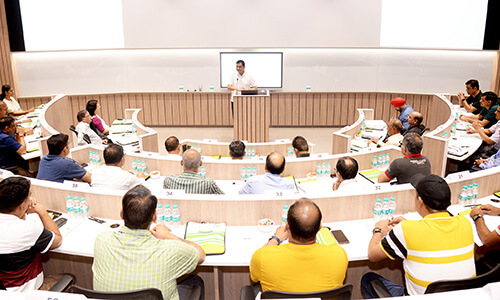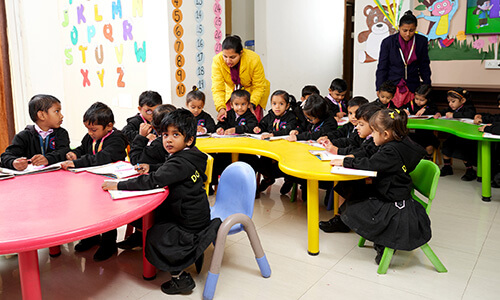GUEST 3 – PIERO TORASSA
Now, Adrian, you told me earlier there are three key properties to soil health: chemical, biological and…
…physical, yes that’s right Ann Helena. Besides maintaining soil fertility and ensuring good biodiversity, physical health is the other point of the triangle. Thus for our third guest, I’ve looked a little bit closer to home. Would you introduce him?
O Of course, Adrian! Let’s welcome our very own Field Engineer Manager from BKT Europe. It’s my absolute pleasure to say hello to Piero Torassa. I’ll leave you now with Adrian.
Well, there’s a trend in agriculture towards heavier machinery – in order to be more efficient, have lower costs, and so on, by covering more ground, more quickly. But this extra weight can increase the risk of soil compaction.
And that’s a big problem for farmers, isn’t it?
Yes, absolutely. Remember Michael’s point about keeping physical, chemical and biological balance? Compaction is a threat to soil’s physical properties. When you compact the soil, you compress the pores within it that allow the passage of air and water. That’s the worst thing you can do for crop health. In compacted soils, root growth is restricted, and water saturation can lead to oxygen deficiency too. Moreover, you can also affect the availability of important nutrients like nitrogen and manganese. The net effect is reduced plant growth, reduced yields – and reduced profits.
Piero, there’s obviously no chance that farmers are likely to go back to smaller machinery. So how can they avoid soil compaction?
Well, the degree of soil compaction caused by machinery travel is directly related to the pressure of the tire on the soil. But that’s not only affected by the applied load – i.e. the weight of the tractor or trailer or implement – but also its footprint. What’s the area of the tire in contact with the soil?
OK…so if we can’t reduce the load, what can we do about the footprint?
I was hoping you would ask that! We can increase it, of course. One way to do that is simply to use wider tires, but not everyone wants to do that and take the larger dimensions that come with it. Moreover, there are some regulations and restrictions regarding the maximum machine width when machines run on the road. The alternative is to use inflation pressure to control the footprint. That’s the principle behind BKT’s VF technology
VF stands for “very high flexibility”, right? Do VF tires have a ‘variable footprint’?
Exactly. By reducing inflation pressure, the tire flattens under load on the soil and its footprint increases. In itself, it’s nothing new – farmers have been deflating tires like this for years. The problem has been that a partially deflated tire has a lower capacity for load, which rather defeats the purpose of the exercise. But with VF technology, we’ve changed the design of the tire to allow a decreased inflation pressure while keeping a constant load capacity – thus providing a route for farmers to better protect their soils when using machinery in the field.
Now, how do you know that one tire is better than another for soil protection? That’s quite difficult to measure.
It is – but we found a way! It’s technical, so I won’t go into detail here, but our method is more reliable than traditional tests such as wet sand, while producing a 3D reference footprint and then using 3D scanning technologies for precise measurements. The ratio between tire’s footprint volume and footprint area gives us a clear index of field compaction. With VF, we saw a 15 per cent decrease in soil compaction.
Well Piero, your love of tires truly knows no bounds. Thank you! Stay here, won’t you – we’ll come back to you at the end.








